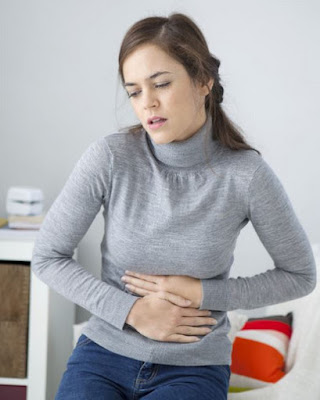Gallstones or Cholelithiasis is a disease characterized by the presence of stones or cholesterol stones in the gallbladder.
It is caused by excess cholesterol, bilirubin, and because the gallbladder does not empty properly can become very concentrated bile, which favors the formation of gallstones.
It is more common in women over 60 years.
Major risk factors for gallstones
- The obesity.
- Diabetes.
- The pregnancy.
- Follow a diet rich in fat, cholesterol and low in fiber.
- Having a family history of gallstones.
- Consumption of high estrogen drugs for female hormonal therapies such as birth control pills and cholesterol lowering.
Causes, symptoms and diagnosis of gallstone
Causes
Its causes are gallstones due to a failure in metabolism and an imbalance between the substances that form the bile is increased cholesterol and decreased bile acids.
Estimates of bilirubin are formed as a result of cirrhosis, liver failure or some other disorders or hemolytic anemia.
Symptoms
Gallstones are often asymptomatic.
Biliary dyspepsia is characterized by flatulence, poor digestion of fats, constipation, headaches and heavy digestions.
In biliary colic occur severe pain in the upper right abdomen and below the sternum, pain between the shoulder blades and in the right shoulder. If jaundice occurs yellowing of the skin and eyes appear.
Other symptoms include gallstone cholecystitis with complications triggers.
Diagnosis
The diagnosis is made by abdominal ultrasound, MRI, CT and X-ray contrasting gallbladder and bile ducts, ERCP to observe the biliary tract and percutaneous transhepatic cholangiography.
Likewise, blood test, hematological and biochemical observing determinations of cholesterol, bilirubin.
Treatment and prevention of gallstone
Treatment
The treatment of choice is surgery with removal of the gallbladder. The gallbladder is not essential to live because bile flows from the liver to the intestine but diarrhea may occur secondary to surgery. Another treatment is medication to dissolve gallstones.
Biliary colic treatment is performed by analgesics, antiinflammatory and anti-emetics.
Oral bile salts are administered to patients with stones smaller than 1 cm made of cholesterol with normal activity of the gallbladder and adequate motility.
By eliminating contact Solvent applying inside the vesicle to dissolve calculations below 1 cm.
Extracorporeal lithotripsy allows the dissolution of stones larger than 1cm shockwave fragmenting calculations.
Prevention
To prevent gallstone 2 things are needed:
- Staying in the ideal weight stable. If the weight increases a diet to lose kilos is needed.
- A proper eating plan.
It is desirable to increase fiber intake by consuming:
- Legumes. Its high proportion of fiber and low fat content reduce the risk of cholelithiasis.
- Fruits: contain no fat and consumption it makes rest the gallbladder. The apple thins bile and reduces their tendency to precipitate to form stones. It is recommended consumption of fruits rich in vitamin C such as oranges, tangerines, guava, kiwi and red fruits.
- Vegetables: Artichokes contain cinarina that facilitates the removal of the gallbladder and prevents the formation of gallstones. Radish contains sulfides increase bile production and facilitates the operation of the gallbladder.
- Soymilk drinks which reduce the tendency to form gallstones.
It is also necessary to reduce or eliminate from the diet:
- Fats any type of fat causes contraction of the gallbladder by a hormonal reflex mechanism which precipitates or aggravates biliary colic.
- Dairy. Casein contained in these favors the formation of gallstones and whole milk or milk like cream and butter cause contraction of the gallbladder.
- Large intake of sugars as this benefits the formation of gallstones.
- Too much animal protein as encourage the formation of gallstones.
Gallstones: causes, symptoms, treatment and diet
4/
5
Oleh
Unknown











